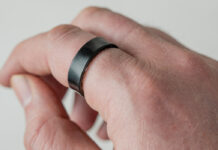
Samsung’s latest Gear VR headset continues the direction the company pursued when it entered the consumer VR space last year. Rather than going with a radical redesign or altering the user experience, this headset is a lot like the last one, only with some slight tweaks to make it look and feel a little different.
A year at this time, I reviewed the previous Gear VR, noting that it was a good entry point into a category that still had a lot of room to evolve. Samsung launched this version of the headset more as a complement to the now-defunct Note 7 smartphone, offering a USB-C connection and full backward compatibility with the Samsung phones that worked on the prior headset.
Design and setup of the Gear VR
Not much was changed to separate the two, but there are some differences worth pointing out. The most obvious is the colour scheme, where Samsung chose to go with a dark navy blue and black trim instead of the white that stood out with the previous model. It’s also slightly bigger to better fit the larger devices it was intended to serve.
The front plate that houses the phone has also been modified. This was initially done to accommodate the Note 7, and presumably, future Samsung devices that would be of a similar size. Rather than a big faceplate covering the inside, the one used here is part of the clasp system carried over from the previous headset. A locking mechanism keeps it firmly in place. My review unit only had the microUSB mount inside, but there is an adapter for USB-C that comes in the box too.
 There are now two buttons — for home and back. Previously, there was only the back button, with home being assigned to the middle of the touchpad. The touchpad on this Gear VR is the same size, yet is a smooth surface with no indentations. The focus wheel is still where it’s supposed to be up top.
There are now two buttons — for home and back. Previously, there was only the back button, with home being assigned to the middle of the touchpad. The touchpad on this Gear VR is the same size, yet is a smooth surface with no indentations. The focus wheel is still where it’s supposed to be up top.
The face pad that attaches with Velcro to the headset is about the same, except the sides protrude further out, helping to block out ambient light and improve ventilation to keep the lenses from fogging up.
Those lenses also have a wider angle, from 96-degrees to 101-degrees, and are slightly tinted to reduce glare. Sharpness is more a matter of focusing with the wheel and the resolution of the phone’s screen, which I’ll touch a little further down.
Oculus remains Samsung’s partner in developing the headset, so its handiwork is very much in effect because the Gear VR’s software has its stamp all over it. The apps and games that work with the headset run through the Oculus Home app. Some are free, others incur a cost.

Gear VR Performance
The slightly wider angle afforded by this version of the Gear VR does offer an incremental visual improvement, and the improved ventilation means there isn’t the same fogginess that sometimes affected the previous version. The touchpad is responsive and the removal of any buttons in the middle helps with consistency.
Even though the Gear VR can work well with a supported gamepad for easier gameplay, many games work perfectly fine using the touchpad as a controller. The contrast becomes more evident as you consume more content. At least that’s how I’ve always perceived this headset going back to the previous model.
What’s different this time is the greater level and variation in the content available. The Oculus Home app is the repository that holds it all, but any photos and videos stored on the phone are playable through the platform as well. Shooting 360-degree video with the Gear 360, for example, and storing them on any of the Samsung phones compatible with that camera, would make them playable on the Gear VR.
Resolution doesn’t change because the phone screens can only go so far. Pixels are going to be evident as dots when viewing anything, especially photos or video, and that’s not unusual for VR at this level. For example, the Samsung Galaxy S7 Edge, the phone I used to test the Gear VR, has a screen resolution of 2560 x 1440, or 2K. Had the screen been 4K, it’s arguable the pixels would be less obvious, but in order to get an unparalleled level of sharpness, resolutions would have to go higher and higher, in my view. Or you would have to buy a high-end VR headset like the Oculus Rift and have a Windows PC that can run it.
The Gear VR isn’t entry-level VR like a cheaper Google Cardboard headset might be, but more intermediate because of the increased functionality from the headset’s design to the content available. I particularly had fun playing Gunjack, and exploring video of nature in a 360 environment. The thing about VR is that almost all content is fun because the perspective is different.
Final Thoughts
This iteration of the Gear VR tweaks some things but doesn’t change a whole lot from the previous model. Even so, I would prefer this one because it is likely to be compatible with future Samsung phones that will use USB-C as the connector. Also, it’s a better fit and doesn’t fog up, as I noted earlier.
It’s not as compact or comfortable as the Google Daydream View is, but it’s in the same ballpark because they don’t differ as much on the content side. This one is specifically made for certain Samsung phones, while the Daydream View will eventually work with a variety of phones beyond just the Pixel and Pixel XL. If you have one of the compatible Samsung devices and are interested in VR, this is a purchase that would make sense.
The new Samsung Gear VR is available now.



